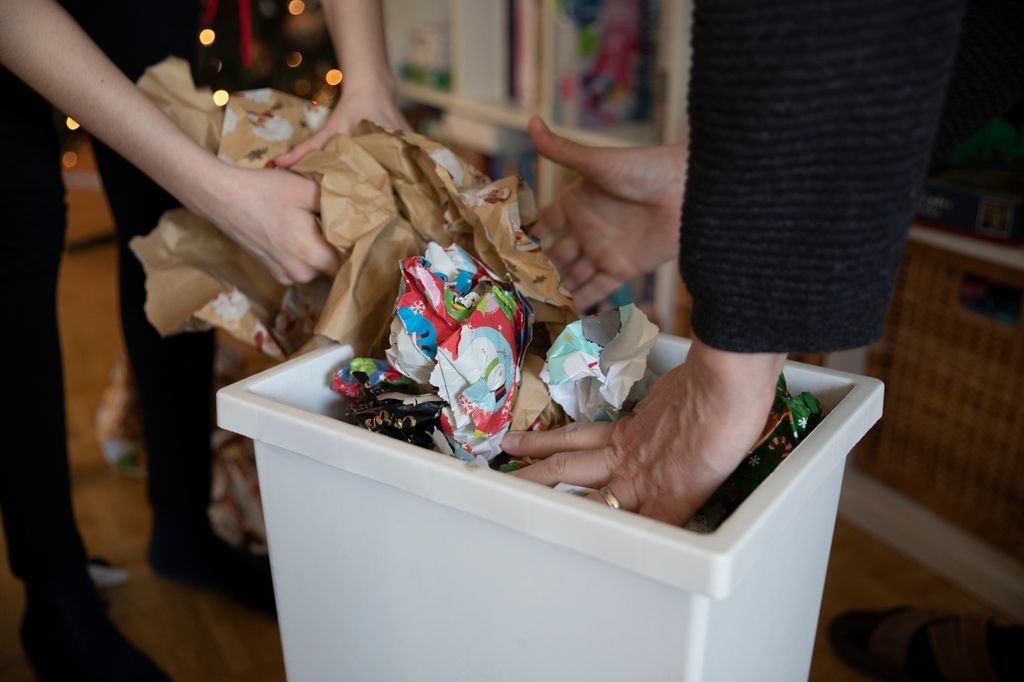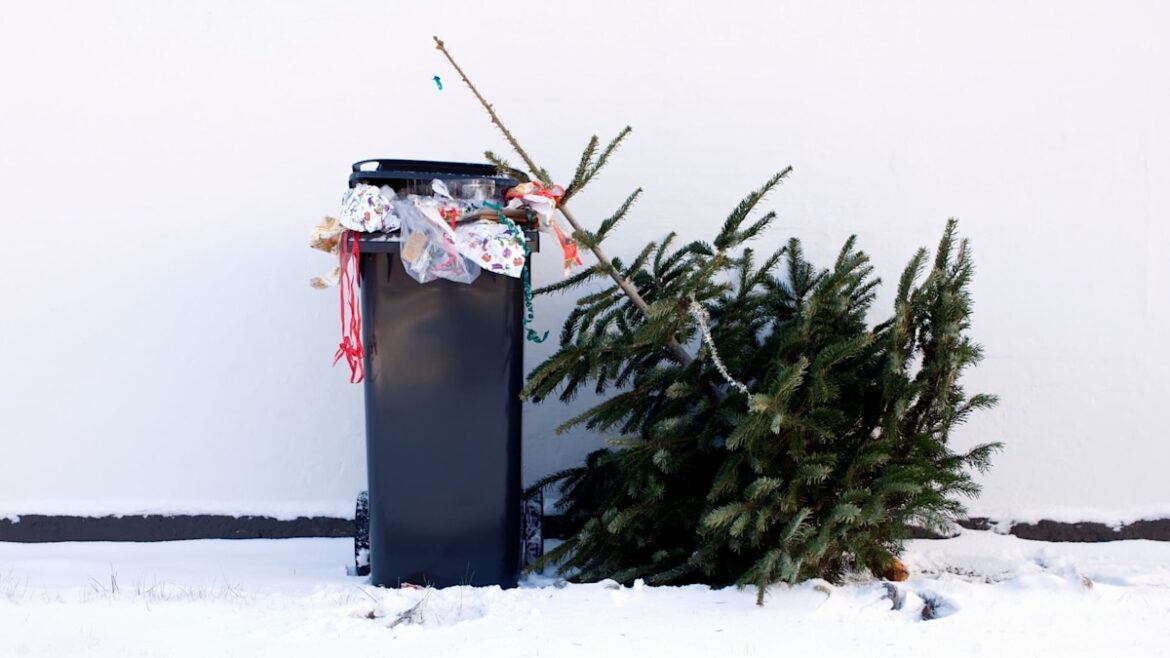While Christmas brings with it an abundance of goodwill, cheer, and delicious food, the festive period also leaves us with a load of waste and empty packaging that causes chaos at the local dump and recycling centre.
The amount of waste that accumulates as a result of various present-giving get-togethers or festive parties, fuelled by bottles of alcohol and packets of picky bits, is astounding, and while sometimes unavoidable, for the most part, there are plenty of things we could be doing to help reduce it.
I know that in my own house, Christmas takes over and stress mounts as preparations for the big day ramp up and the pile of waste grows in the bins outside. From hosting relatives to wrapping presents and opening boxes of chocolates and mince pies, the amount of rubbish is alarming.
That’s why HELLO! asked the experts for their very best tips and tricks on how to minimise waste by making subtle changes to your habits around this time of year.
Low-waste gift wrapping swaps that still look beautiful
Instead of buying reams upon reams of Christmas-themed wrapping paper in different colours and patterns, this year, place more focus on sustainable wrapping and how you might be able to do this.
Have a look around your own household and see what materials are already there on offer. Perhaps you have some leftover wrapping from the year before, or a roll of brown paper could be repurposed as wrapping with a little creativity and added decoration. Get inventive and use a newspaper as a wrap for gifts instead of leaving it to gather dust.
Jazz up your presents by adding old ribbons you found in your house to the brown paper wrapping, or decorate them with drawings and any other ornamental items you can find at home.
Decluttering and sustainability expert Alesia Chumakova told HELLO!: “The festive season not only brings positive emotions and memories but also a lot of garbage.
“Disposable decorations, gift wrap, garlands, and even useless gifts clutter your home and end up in the trash. If you want to reduce waste and be more sustainable during the festive season, you can adopt a few new habits.”
 © Getty ImagesWhile Christmas is a time of goodwill, it also brings with it a load of waste
© Getty ImagesWhile Christmas is a time of goodwill, it also brings with it a load of waste
Eco-friendly ideas
The best way to reduce waste at Christmas is to reuse decorations and items you already have, rather than buying new things just for the sake of having fresh items for this season.
Re-use wrapping paper from the year before, fish out old decorations from the attic and opt to gift experiences instead of physical items that have a lot of packaging.
“You can substitute a natural or artificial Christmas tree with an alternative tree,” Alesia suggested. “I guess you have seen examples on the Internet of a Christmas tree made from books or drawn on a wall or door. It also helps create a festive atmosphere and doesn’t generate new waste.”
She also added: “Reinvent your attitude to gifts. The best gifts are not always physical objects that can be garbage the next day.
“It can be emotions, like spa vouchers, theatre tickets, or, if you want to be more practical, subscriptions to online services or mobile applications. In the App Store, you can buy annual subscriptions and send them by email with congratulations.”
How to cut down on food waste over Christmas
Easier said than done, monitoring and reducing the waste generated from food over the Christmas period can be tricky.
It is the one time of year when food flows like it’s running out, and between boxes of treats and bottles of booze, there’s an alarming amount of packaging and half-eaten food that makes its way into kitchen bins.
According to Gov.uk, the best way to make sure you are keeping waste to a minimum is to create precise shopping lists, source your ingredients locally and only buy what you really think you will eat and drink.
“Try and buy as many items as possible from local suppliers, such as your meat, fruit, and veg. Buy your vegetables loose where possible, as plastic packaging accounts for nearly 70% of the UK plastic waste.
“Plan and be realistic about how much food you need and use up leftovers where possible. Instead of clingfilm, use reusable containers/covers and wax cloth covers to keep your leftovers fresh.”
 © Getty ImagesIt is important to know the difference between what can be recycled and what can’t
© Getty ImagesIt is important to know the difference between what can be recycled and what can’t
Sustainable decoration swaps
Just like with food, there are plenty of ways your Christmas decorations can be less wasteful and more sustainable.
This is the perfect time of year to sit the family down and encourage some creativity. Find the old art box, get a pair of scissors and some glue and make your own festive decor that can be used again for many Christmases to come.
Instead of your plastic wreaths and trees, opt for living foliage to spruce up your home this year. Buy a freshly made wreath out of real plants and choose a tree in a pot that can be replanted in the garden once the festivities are over.
What you can and can’t recycle at Christmas
Being mindful of waste also means being aware of recycling rules and regulations so that your good intentions don’t turn out to be part of the problem due to a lack of knowledge.
“Plain Christmas cards can easily be recycled, but any card that has glitter, glue, foil, or a 3D picture on it can’t be recycled and should be put in general waste,” Recyclingbins.co.uk pointed out.
When it comes to cardboard packaging, once it is flattened, it can go straight into the recycling bin. However, it is important that the cardboard stays dry and that it doesn’t contain polystyrene, as this can’t be recycled.
Sweet and biscuit tins made of plastic and metal can either be kept and reused as storage containers, or they can be put in the recycling once all wrappers are removed.
Despite it being paper, wrapping papers need extra attention when it comes to recycling, as many are laminated and won’t be classed as recyclable. If sellotape is still stuck to it, it also won’t be suitable for the recycling bin.
The UK bins enough wrapping paper each year to circle the globe nine times, according to WRAP. They suggest the ‘Scrunch Test’ – if paper stays scrunched, it can be recycled.
Anything containing glitter, foil, 3D elements, as well as broken toys, cannot be recycled and needs to go in your general waste bin.


Dining and Cooking